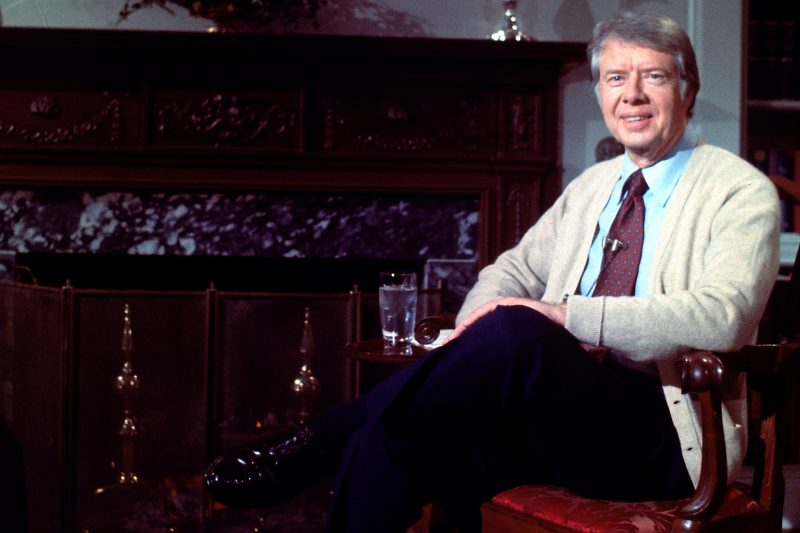In the winter of 1977, President Jimmy Carter made a seemingly innocuous fashion choice that would reverberate far beyond the confines of his wardrobe. As he addressed the nation in a televised fireside chat, the President donned a simple and homespun-looking cardigan. This seemingly benign act of putting on a sweater was a symbolic gesture intended to urge Americans to conserve energy during a time of national crisis. Little did Carter know that his choice of attire would ignite a storm of Republican backlash that would shape the political landscape for years to come.
Carter’s decision to wear a sweater was a deliberate attempt to convey a message of austerity and responsibility to the American people. At the time, the country was in the midst of an energy crisis, with skyrocketing oil prices and shortages causing widespread concern. In response, Carter launched a national energy conservation program that included calls for reducing dependence on foreign oil and encouraging energy-saving measures at home.
The image of the President in a sweater, speaking earnestly about the need for conservation, struck a chord with many Americans. It was seen as a relatable and down-to-earth gesture from a president who was often perceived as out of touch with the average citizen. However, for some Republicans, particularly those aligned with the more conservative wing of the party, Carter’s sweater-wearing moment was a step too far.
In the eyes of many Republicans, Carter’s sweater became a symbol of excessive government intervention and overreach. They saw his energy conservation program as an infringement on personal freedoms and an example of government over-regulation. Critics derided Carter’s sweater as a superficial and ineffective response to a complex problem, dismissing it as a mere PR stunt that did little to address the underlying issues.
As the outrage over Carter’s sweater grew within conservative circles, it began to take on a life of its own. Republicans seized upon the image of the President in his cozy cardigan as a way to rally their base and galvanize opposition to his policies. Carter’s sweater became a shorthand for what many saw as his failures as a leader – a symbol of weakness, ineffectiveness, and misguided priorities.
In the years following Carter’s presidency, the legacy of the sweater incident persisted. Republicans invoked it as a cautionary tale of government overreach and bureaucratic incompetence, using it to bolster their arguments against environmental regulations and energy conservation efforts. The image of Carter in his sweater became a potent symbol in conservative rhetoric, a visual shorthand for everything they believed was wrong with liberal policies.
While Carter’s sweater may have been a minor footnote in his presidency, its lasting impact on the political landscape cannot be understated. What began as a simple gesture of conservation and responsibility turned into a flashpoint for political debate, highlighting the deep ideological divisions that continue to shape American politics to this day. Jimmy Carter may have worn a sweater that winter night in 1977, but the repercussions of that choice are still being felt decades later.
